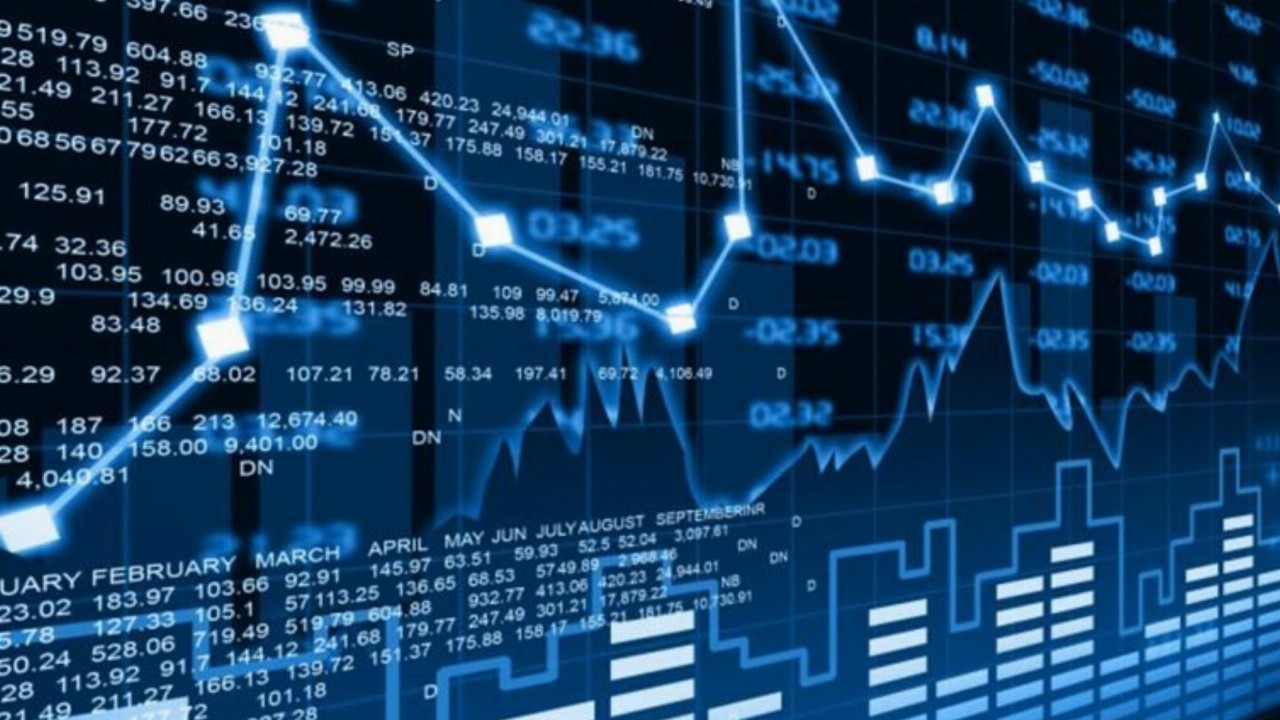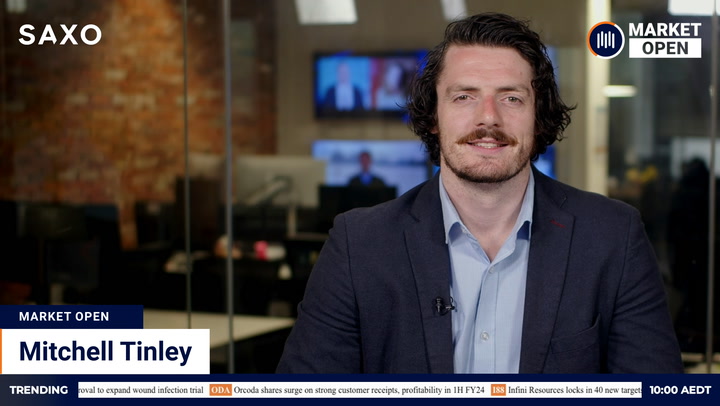The share market looked set to open little changed following a mixed close on Wall Street as rising interest rates boosted lenders and depressed growth stocks.
ASX futures inched up a point or 0.01 per cent as the Dow led for a second night and the S&P 500 edged higher. The Nasdaq Composite declined.
BHP and Rio Tinto rose with iron ore in overseas trade. Oil shrugged off a coordinated release of national strategic reserves. Gold fell for a fourth session.
Wall Street
Rising interest rates dictated trade on US financial markets for a second night. Bond markets are betting on higher rates as soon as June following the renomination of Jerome Powell for Federal Reserve Chair. The yield on ten-year US treasuries has climbed more than ten basis points in two sessions to its highest in a month.
The Dow Jones Industrial Average outperformed for a second night, rising 195 points or 0.55 per cent as gains in lenders outweighed declines in growth stocks. The growth-heavy Nasdaq Composite slumped 80 points or 0.5 per cent. The S&P 500 finished eight points or 0.17 per cent ahead.
“With a Powell-led Fed, we expect the speed of the QE [quantitative easing] taper to follow the data, likely speeding up if inflation prints continue at the pace of the October print with interest rate hikes to shortly follow the taper (June at current pace). The market believes this action will keep the Fed in control of inflation,” Aptus Capital Advisors portfolio manager John Luke Tyner told clients.
The key theme this week on Wall Street is “rotation“. Analysts say investors are moving funds within the market, not out. The major indices remain within touching distance of record levels. The S&P 500 and Nasdaq both hit all-time intraday highs on Monday night.
“What you may be seeing with growth stocks is investors are rotating into different sectors, they are not rotating out. They are still bullish,” Eric Schiffer, chief executive of private equity firm Patriarch Organization, told Reuters.
Growth sectors such as tech and communication services declined. These sectors are seen as more vulnerable to higher rates because valuations tend to be higher relative to future earnings, and those earnings are more exposed to the cost of borrowing.
Zoom Video plunged 14.71 per cent after warning of a likely slowdown as workers return to the office, reducing the need for remote communication. Best Buy dragged on the consumer discretionary sector, sliding 12.04 per cent on disappointing holiday sales.
The Dow’s best performers were financial firms whose margin opportunities improve with higher rates. Goldman Sachs put on 2.57 per cent. JPMorgan Chase added 2.39 per cent. Chevron gained 2.1 per cent as oil rallied.
Australian outlook
Futures trade suggests a flat start, but there appear to be more positives than negatives in the overnight action. The prospects for the nation’s two most significant sectors – financials and materials – have improved significantly this week.
The S&P/ASX 200 jumped 0.78 per cent yesterday to its highest finish in a week as both the mining and banking sectors fired up.
US financials were the night’s second-best performer (after energy), rising 1.55 per cent. The Australian sector crawled off a 16-week low yesterday and should have more in it today as Australian yields follow US yields higher. (Higher yields equal better profit margin opportunities.)
Iron ore is on a tear this week, briefly trading limit up yesterday in China (more below). That should keep a floor under BHP, Rio Tinto and Fortescue Metals, yesterday’s standout heavyweight advancers.
The dollar is also heading in the right direction for Australia’s export-driven economy. The Aussie traded as low as 72.05 US cents overnight and was lately at 72.26 US cents.
Trading volumes will likely fall away over the next few sessions as US participants head home for Thanksgiving. Tonight is the last full US trading session of the week. The NYSE and Nasdaq close on Thursday and only reopen for a half-session on Friday.
The last full week of AGM season delivers meetings today for shareholders in Harvey Norman, Ramsay Health Care, Hills, Ridley, Shopping Centres Australasia, Liontown Resources, Rhythm Biosciences and Integrated Research.
Quarterly construction data (a key input to next week’s GDP report) is due at 11.30 am AEDT. RBA Assistant Governor Michele Bullock is due to take part in an online discussion about digital currencies.
IPOs: EBR Systems lists today at 11.30 am AEDT. The company is at the trial stage with medical devices for treating patients with heart failure.
Commodities
Iron ore surged for a third session in anticipation of stronger demand from steel mills next month. The spot price for ore landed in China climbed US$4.75 or 5 per cent to US$99.45 a tonne. The most active contract on China’s Dalian Commodity Exchange traded limit up yesterday morning before finishing 7.8 per cent ahead.
Traders said steel mills had reduced production under government-mandated environmental curbs by so much that there was room for increases next month.
“The supply-side of iron ore has not changed much recently, but more mills are planning to increase output next month,” a Beijing-based trader told Reuters.
BHP‘s US-listed stock climbed 2.78 per cent. Its UK-listed stock added 3 per cent. Rio Tinto put on 2.98 per cent in the US and 2.89 per cent in the UK.
Oil took in its stride a White House announcement the US and other countries, including China, India, the UK and South Korea, will release strategic reserves to rein in prices. Crude turned briefly lower, then rallied.
Brent crude settled US$2.61 or 3.3 per cent higher at US$82.31 a barrel. The US benchmark rose 2.3 per cent to US$78.50.
“The most significant part of the announcement… is the coordination among some of the world’s leading consumers and importers as a sort of temporary challenge to OPEC+’s command on the market,” Robbie Fraser, global analytics and research manager at Schneider Electric, said.
“At the same time, strategic reserves will never be the ideal tool for addressing issues created by persistently undersupplied conditions.”
Rising rates pushed gold below US$1,800 an ounce. Metal for December delivery settled US$22.50 or 1.2 per cent lower at US$1,783.80 an ounce. The NYSE Arca Gold Bugs Index shed 1.55 per cent.
Historically, gold loses some of its investment appeal when returns elsewhere improve.
“Investors have been selling low- and zero-yielding assets as yields on government bonds continue to ascend. This is why gold and silver have fallen further, while technology and other growth stocks are also finding no love,” Fawad Razaqzada, market analyst at ThinkMarkets, said.
Copper rose as warehouse inventories remained near record lows. December copper advanced 2.7 cents or 0.6 per cent to US$4.4235 a pound on Comex.








